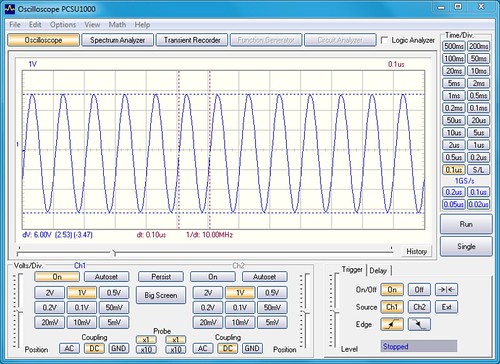Perhaps twenty years ago, I was writing firmware in C and C++ for optical networking products based on ATM and SONET. One night I found myself working late in a lab trying to debug some recalcitrant real-time code. I was surrounded by an H-P broadband analyzer, two H-P ATM protocol analyzers, and a tangle of multimode optical fiber. I realized I had maybe US$300,000 worth of test equipment dedicated to this one task, never mind my high-end workstation and the room-filling racks of telecommunications equipment. I paused for a moment to realize that an organization smaller than Bell Labs might have had a tough time tackling this product development effort, the investment in infrastructure was so significant.

Moore's Law hasn't really changed things that much, because as the tools got cheaper, the systems we develop and debug have gotten larger and more powerful right along with them. Just the other day I was working on my stratum-0 atomic clock project and I realized that my little hobbyist oscilloscope - one of the most useful tools I have ever purchased - was completely inadequate for doing any kind of jitter analysis on the output of the device. After some reflection, I decided I probably didn't know anyone that had an oscilloscope that could measure the jitter of my chip-scale atomic clock. Any jitter that might be detected would surely be in the oscillator used by the measurement instrument itself.

See, our measurement of time is a funny thing. It is a completely synthetic artifact, a singularly human invention. Thanks to natural variation in the Earth's rotation and in its orbit, time isn't even tied to the movement of the Sun any longer. It's defined, in the International System of Units, to the beat of an oscillator based on the cesium-133 time standard. And the thing I was trying to measure was itself an oscillator based on the cesium-133 time standard. The only way we can measure the precision and accuracy of a clock is by using a more precise and more accurate clock. I'm not likely to ever have one of those.
The larger lesson here is this: before you decide to tackle a project, make sure you can get the tools you need for the entire life-cycle of the product. You may find out that the economics of developing a product are substantially different from the economics of debugging, testing, validating, and supporting that product.

No comments:
Post a Comment